Рено за Бразилия
Кевин Магнусен:
What do you make of the historic Brazilian Grand Prix?
Brazil is a legendary weekend. It’s got so much about it, many of my idols have raced at Interlagos in the past. In my childhood it was always the last race so it had that championship presiding feeling about it. I think it’s unfortunate that it’s not the last race anymore as it feels like it should be but it’s still a fantastic weekend nonetheless.
How do you find the anticlockwise Interlagos circuit itself?
I know a lot about the circuit and it’s one of those famous places that’s so ingrained in Formula 1 history. It’s a short lap, it has a go-kart feeling to it as you are having to turn all the time and it flows quite nicely. Interlagos, like Austin, is one of only a few circuits that run anti-clockwise, so it’s cool that these two races are close together on the calendar.
What sort of mind set do you approach it with?
From the first corner onwards, it’s a really exciting circuit and there are quite a few overtaking opportunities, especially in the first sector. It’s a real driver’s track and pretty bumpy all the way round, so set up will be crucial to getting the most out of a lap. The South American fans love their Formula 1 too, so I’m excited about getting out there. But, as a driver, Brazil is another race and we’ll give everything we have to come away with a decent result for the team.
It must be quite special to walk down the Senna esses!
The first time you go there it’s a really cool experience as you’ve seen it on television so many times and watched the films of the likes of Ayrton Senna and Alain Prost. It has a lot of history and that makes it a very special weekend. It’s one of those unique places which makes it a good experience to race.
The Brazilians are known for their carnival atmosphere; do you notice that from the cockpit?
They are very patriotic and always cheering for the drivers, especially for Massa or the other Brazilians. It’s like that everywhere you go, though. Mexico was good for that too, both countries are very cheerful so that makes it very fun to go to and enjoy.
Джулиън Палмър: You had a solid race in Mexico, does that put you in good stead for Brazil?
I’m feeling good for Brazil as it should just carry on the good momentum that we’ve had in the second half the year. It was a shame not to qualify last time out as we could have shown even better improvement. One of my best grid spots was in prospect, but we made up for it in the race. The race pace has been good for a long time now, qualifying pace has been good too. We had some decent battles with the McLarens in Mexico, so I think we can be pretty confident going into Brazil.
So Interlagos shouldn’t present any difficulties?
The car is getting better every round still, and I’m driving pretty well and getting more and more out of it, so I think that combined with the fact Brazil is a nice track, means I’m hopeful for a positive weekend.
What do you think of the track?
I did FP1 there last season. I was quite new to the car but I actually really enjoyed it. It’s an interesting layout and I was pretty competitive. It’s a legendary circuit which has a fantastic atmosphere. It’s anticlockwise so you have a lot of fast left-handers which we’re not so used to! I quite like turn one and two, the Senna esses, it’s a good combination of corners. It’s good for overtaking but also easy to lock-up at the end of that straight heading into the downhill left-hander. The inside wheel is particularly unweighted as you’re braking and starting your turn-in, because of the camber of the corner. If you get it right here, you can have a decent advantage against a rival. There have been many interesting races here in the past, I remember Hamilton winning the title at the last corner and the 2012 race as well, where Vettel won too.
There are two races left, what do you hope to achieve from them?
The season has gone so quickly. We just have to give it our all. I’d love to get another points finish before the year is out, so I will be pushing for that all the way for the final two races.
Is there anything in Sao Paolo that you’d like to see or do?
I didn’t see so much of the city last year, but I like Brazil, the main thing is the passion of the crowd they always seem to bring a good, party vibe. It’s also renowned for its food and drink. I’ll probably grab some steak, especially after the race!
Ник Честър: What’s notable about the Autodromo Jose Carlos Pace?
It’s an anticlockwise clockwise circuit with varying gradient and situated at quite high altitude, but not as extreme as Mexico. Sao Paulo is around 800 metres above sea level whereas Mexico City was over 2000, so you lose a little bit of downforce, but nothing compared to the last race. It is quite a challenging circuit to set up for because of the contrasting needs of the twisty infield and the long straight. We would like to run maximum downforce for more grip in the twisty bits, but you need to be as drag-free as possible to maximise your speed on the long straight.
What’s the circuit like on the tyres?
It’s hard to generate grip at Interlagos so it won’t be too easy on the tyres. We will have the Pirelli soft, medium and hard compounds available but we don’t expect to see too much use of the hards. The track is bumpier than some of the smooth circuits we have visited recently so this will affect our mechanical set-up.
What type of work can still be done on the cars at this stage of the season?
Whilst most of the focus is now on 2017, we carry on doing more work on tyre management, as all teams do. It’s still a challenge as they are tricky beasts to get working in the right range so there’s more we can do and learn. We also continue work on set-ups and set-up experiments. We’ll carry on with those as they generate data that we will be able to use next year.
How would you sum up the Mexico race?
Jolyon drove a good race going from the back of the grid to fourteenth place with a huge stint on the medium set of tyres. He did his pit stop on lap 1 and did 69 laps thereafter on the same set. He put up a good fight against the McLarens, even if in the end he couldn’t quite keep them behind. For Kevin, it was a trickier race. He had a pretty good start and had a good stint on the soft tyres. At the pit stop, we put the medium set on the car and he lost a bit of pace. For his last stint he was on the super softs and he did enough to get ahead of the Haas cars and the Toro Rossos. His feedback was that he wasn’t happy with the balance of the car and it looks like he’d lost some downforce at the rear which we are investigating ahead of Brazil.
There are only two races left of the season, what are your thoughts going into them?
We have proved that we are able to capitalise on any given opportunity during the races so our aim is to continue to do that and finish the final two Grands Prix in the points.
Fred Vasseur: What do you expect from the next race in Brazil?
We are seeing for a while now that we have made a step up in terms of performance regardless of the circuit we are visiting, so that is encouraging. We are seeing that the gaps in the midfield are getting smaller all the time and it’s up to us now to put it all together in terms of set-up, tyre management, and extract everything possible from the potential of the car.
What do you want to see from the last two races of the year?
I expect further progress on track as we continue to extract the maximum from the R.S.16. There are still areas that we can work on to improve the overall team performance whether it is pit stops, set-up work or tyre management. I know that the team is completely focussed on that and it’s good to see their motivation.
The 2017 wheels and tyres are considerably bigger than the current ones: aside from performance, what are the implications for the team?
It’s true that it will require a bit of a different set-up! The crew will certainly have to focus their training in this area as the tyres will be heavier and we’ll also need different equipment ranging from racks to tyre blankets. We will need to conduct a lot of pit stop practice – as we always do – as the rear tyres are significantly wider as well as heavier. It’s going to take some time to adapt, but that is always part of the challenge of Formula 1. We’ll pay a considerable amount of attention to this before the first race of 2017.
What’s the plan for the off-season?
2017 is a big challenge: we have a new technical challenge with the changed regulations and it will be the first car we produce under our new regime. There is a real excitement about the new car and the factory has some very busy months ahead producing it. There is a big unknown for next year as everyone is creating their new cars in isolation and we won’t know how we compare until we hit the track at the first test in Barcelona. That is part of the excitement in this industry. We can’t wait to be out on track for the first day of testing to get a feel of where we are at. But, until then, we have the two final races of 2016 and, rest assured, we’ll push all the way on track in Brazil and Abu Dhabi.





















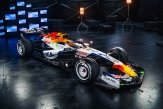
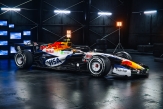

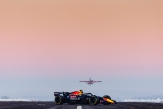
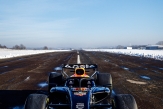
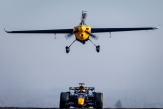
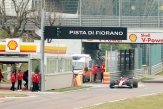
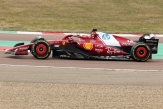
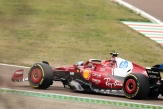
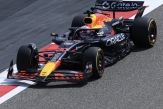
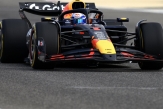
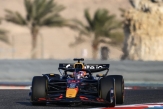

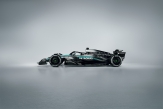
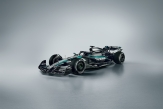
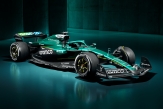
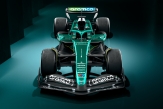
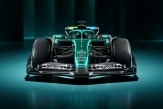
.jpg)
.jpg)
.jpg)

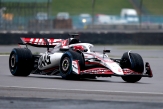

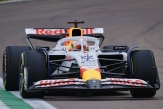
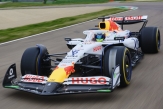

02/12/2025 от Огнян Тенчев (drJeckyll), няма коментари